An emergency food supply is an essential part of the prepper lifestyle. In this article we hope to deliver a complete guide on storing food for emergencies.
When the storm clouds gather, the ground shakes, or unforeseen disasters strike, the value of a well-prepared emergency food supply becomes crystal clear. In these challenging moments, food isn’t merely sustenance; it’s a lifeline, a source of comfort, and a symbol of resilience. In this comprehensive guide, we’ll navigate the essential terrain of storing food for emergencies—a practice that transcends mere preparation; it’s the cornerstone of survival.
Your Guide to Storing Food for Emergencies
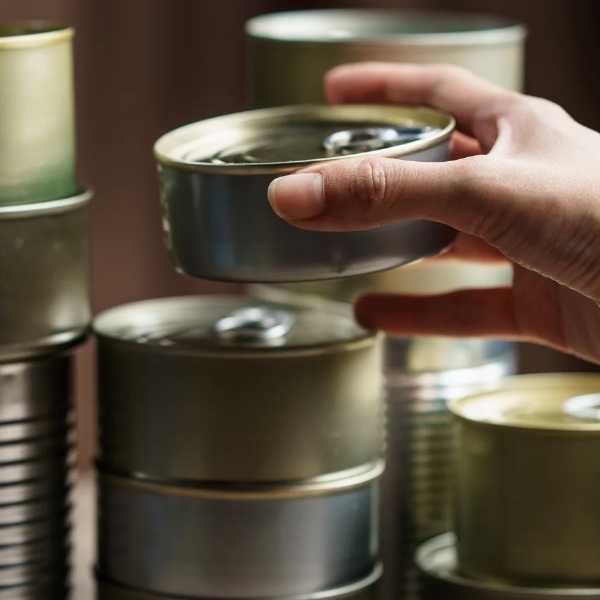
Imagine this: A hurricane barrels toward your coastal town, leaving you without access to grocery stores for days, or even weeks. Perhaps it’s a power outage during a winter storm, turning your world into a frozen, isolated landscape. These scenarios are not just hypothetical—they’re real and can happen to anyone, anywhere.
The Crucial Role of Food Storage for Emergencies
In the face of such uncertainties, the concept of food storage for emergencies takes center stage. It’s not a matter of hoarding or fear; it’s a matter of being proactive, self-sufficient, and responsible. When you have a well-thought-out plan and a properly stocked pantry, you’re better equipped to protect yourself and your loved ones from the unpredictable twists of life.
Understanding the Importance
Why, you might wonder, is storing food for emergencies so critical? The answer is simple: It’s a matter of survival and peace of mind. In times of crisis, access to fresh groceries may become limited or even impossible. Having a stockpile of nourishing food ensures you won’t go hungry when the world outside becomes uncertain.
In this guide, we’ll delve deep into the art of food storage for emergencies, exploring various aspects, from the types of foods to store to the methods of safe storage and rotation. Along the way, we’ll emphasize the importance of this practice and provide you with valuable insights to empower your preparedness journey.
So, whether you’re new to prepping or a seasoned survivalist, join us as we uncover the secrets of food storage for emergencies. It’s not just about storing food; it’s about securing your future in an uncertain world.
1. Why Food Storage Matters in Emergency Preparedness
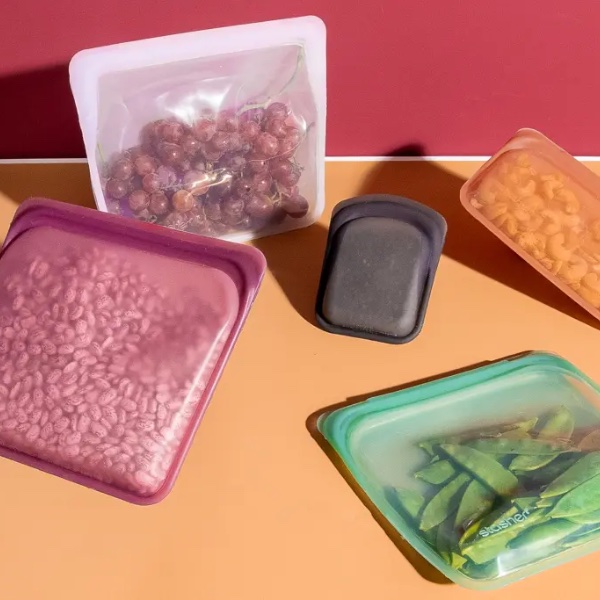
Highlighting the Relevance
In the realm of emergency preparedness, few practices are as fundamental as food storage. It’s not a mere precautionary measure; it’s the very foundation of readiness. To truly grasp why food storage matters in emergency preparedness, let’s break it down.
Security Amidst Uncertainty
Emergencies, by nature, are shrouded in uncertainty. Whether it’s a natural disaster, power outage, or unexpected crisis, the ability to secure sustenance is paramount. Imagine a scenario where your region is hit by a severe storm, causing widespread power outages and rendering grocery stores inaccessible. In such moments, your well-prepared food supply is the lifeline that ensures you and your family won’t go hungry.
Self-Reliance in Adversity
Another critical aspect is self-reliance. When you have a thoughtfully stocked pantry, you’re not dependent on external sources for your meals. This sense of self-sufficiency can alleviate stress during emergencies, allowing you to focus on other essential aspects of survival.
Financial Prudence
Food storage for emergencies also translates into financial prudence. Instead of relying on expensive convenience foods or takeout during crises, you have the peace of mind that your cost-effective food supply is readily available.
Variations of Emergency Food Storage
As we explore the relevance of storing food for emergencies, it’s crucial to understand the various aspects encompassed by this practice. Emergency food storage isn’t just about hoarding canned goods; it’s a multifaceted approach that includes understanding the types of foods to store, proper storage methods, and efficient rotation.
In the sections ahead, we’ll delve into these nuances, offering insights and guidance to help you become a proficient food storage practitioner. Together, we’ll unlock the secrets to a well-prepared pantry that ensures security, self-reliance, and peace of mind during the most challenging times.
2. Types of Emergency Foods
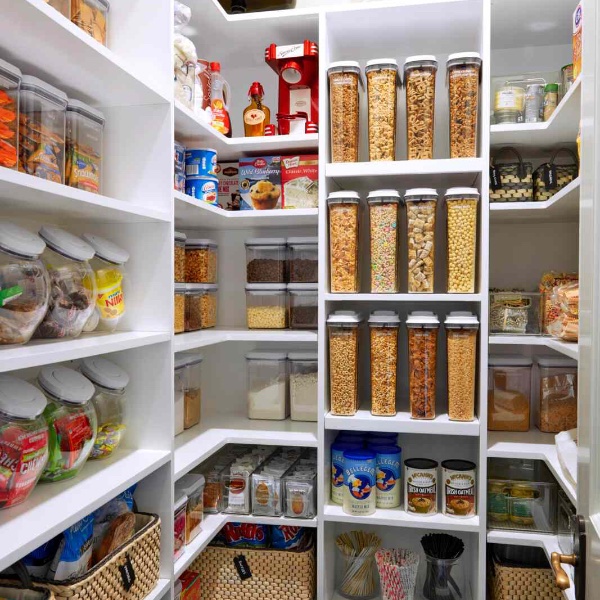
Exploring Variety
When it comes to storing food for emergencies, one size does not fit all. The world of emergency foods is incredibly diverse, offering a multitude of options to cater to various preferences, dietary needs, and storage conditions. To truly prepare for the unexpected, it’s essential to understand the different types of emergency foods available.
1. Canned Emergency Food
Canned goods are stalwarts of emergency food storage. They’re prized for their durability, long shelf life, and convenience. From canned vegetables and fruits to soups and meats, these items provide a substantial source of nutrition during crises. The canning process seals in freshness and taste, making them a reliable choice for your emergency pantry.
2. Freeze-Dried Survival Food
Freeze-dried foods are a game-changer in emergency preparedness. These lightweight, compact meals retain their flavor and nutritional value for an extended period. Freeze-drying removes moisture, preventing spoilage, and reducing the overall weight of the food, making them ideal for backpacking or bugging out.
3. Dehydrated Foods
Dehydrated foods, like fruits, vegetables, and jerky, are nutrient-dense and lightweight. They’re perfect for those looking to save space while still enjoying a variety of flavors during emergencies. Dehydrated foods can be easily rehydrated with water, providing essential sustenance when needed most.
4. MREs (Meals Ready to Eat)
MREs are compact, pre-packaged meals designed for military use but now widely available to civilians. These meals require no preparation; simply open and eat. MREs often include a variety of items like main courses, sides, snacks, and desserts, ensuring a balanced diet during emergencies.
5. Long-Term Food Kits
Long-term food kits are comprehensive solutions for extended emergencies. These kits typically contain a wide array of foods, from staples like grains and beans to fruits, vegetables, and protein sources. They come in various sizes to accommodate different needs, ensuring you have an adequate supply on hand.
6. Specialty Diet Foods
For individuals with dietary restrictions or special preferences, specialty diet foods are available. These include gluten-free, vegetarian, and vegan options to cater to a diverse range of needs.
As we delve into the world of emergency food storage, keep in mind that variety is your ally. A well-rounded pantry that includes a mix of these emergency food types ensures you have options, providing both sustenance and comfort during challenging times.
In the upcoming sections, we’ll explore how to store these foods effectively, ensuring they remain safe and ready for consumption when emergencies strike.
4. Shelf-Stability and Longevity
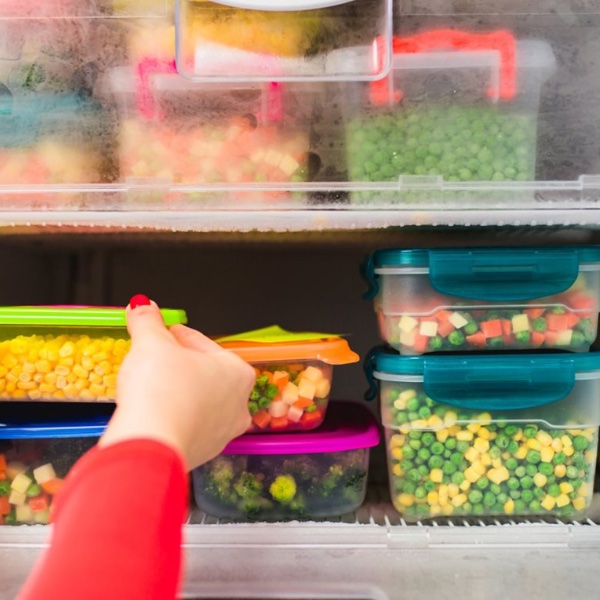
Emphasizing Durability
One of the primary considerations when it comes to food storage for emergencies is the shelf-stability and longevity of the items you choose to stock. After all, the goal is to have a reliable food supply that can withstand the test of time and remain edible when you need it most.
1. Canned Emergency Food
Canned emergency food is renowned for its impressive shelf-stability. Sealed within airtight containers, canned goods can last for an extended period, often reaching well beyond their labeled expiration dates. This durability is owed to the canning process, which hermetically seals the food, preventing the entry of oxygen and microbes that can cause spoilage.
2. Freeze-Dried Survival Food
Freeze-dried survival food also boasts exceptional longevity. The freeze-drying process removes moisture, a key factor in food deterioration. Without moisture, the food remains lightweight, compact, and resistant to spoilage. Freeze-dried meals can remain edible for 25 years or more, making them an ideal choice for long-term food storage.
3. Dehydrated Foods
Dehydrated foods are known for their shelf-stability. By removing moisture content, dehydrated fruits, vegetables, and meats become inhospitable to bacteria and molds. When stored in airtight containers in a cool, dry place, dehydrated foods can last for several years.
4. MREs (Meals Ready to Eat)
MREs are designed for durability in harsh conditions. Their individual packaging ensures that each component remains protected from environmental factors. When stored at moderate temperatures, MREs can have a shelf life of 5 to 7 years or more.
5. Long-Term Food Kits
Long-term food kits are specifically curated for extended storage. These kits typically consist of foods with extended shelf lives, such as grains, legumes, and freeze-dried or dehydrated components. When stored in optimal conditions, these kits can last for up to 25 years or more.
6. Specialty Diet Foods
Specialty diet emergency foods, like gluten-free or vegan options, often have varying shelf lives. It’s essential to check the packaging for specific expiration dates and storage recommendations.
Understanding the shelf-stability and longevity of the foods in your emergency pantry is vital for effective long-term food storage. Proper storage conditions, including temperature and humidity control, play a significant role in preserving the integrity of your food supply. In the following sections, we’ll delve into the specifics of food storage methods to ensure your emergency foods remain in peak condition for years to come.
5. How to Store Food Safely
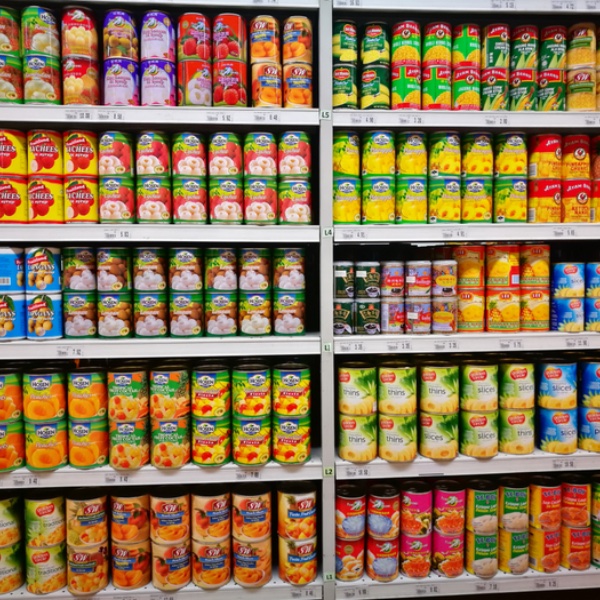
The Importance of Proper Storage
Storing food for emergencies safely is not just a matter of convenience; it’s a critical component of your preparedness strategy. Proper storage ensures that your food remains edible and safe for consumption, especially during times when access to fresh groceries may be limited or unavailable. In this section, we’ll delve into the significance of proper storage and explore various methods to safeguard your emergency food supply.
1. Short-Term Food Storage
Short-term storing food for emergencies is essential for maintaining the freshness of foods you plan to consume within a relatively brief period, typically a few months to a year. Here are some key considerations for safe short-term food storage:
- Use airtight containers: Transfer opened packages of dried goods like rice, pasta, and grains into airtight containers to prevent moisture and pests from compromising the food’s quality.
- Rotate your stock: Practice the “first in, first out” (FIFO) method. Consume the oldest items in your pantry first to ensure nothing goes to waste.
- Keep it cool and dry: Store short-term food supplies in a cool, dry place away from direct sunlight and temperature fluctuations. High temperatures can accelerate spoilage.
- Check for pests: Periodically inspect your stored foods for signs of pests like insects or rodents. Place bay leaves or sachets of dried lavender to deter pests.
2. Long-Term Food Preservation
Long-term food storage is a fundamental aspect of prepping. It ensures that you have a reliable food source that can sustain you for an extended period, even when faced with challenging circumstances. Here’s how to achieve safe long-term food preservation:
- Choose the right containers: Opt for food-grade, airtight containers such as Mylar bags, vacuum-sealed bags, or food-grade buckets with sealed lids. These containers help create a barrier against moisture, oxygen, and pests.
- Utilize oxygen absorbers: When packing food for long-term storage, consider using oxygen absorbers. These small packets remove oxygen from the container, inhibiting the growth of aerobic bacteria and preserving the food’s quality.
- Control temperature and humidity: Store your long-term food supply in a cool, dark, and dry location. Ideal temperatures range from 50°F to 70°F (10°C to 21°C). High humidity can lead to spoilage and degradation of food quality.
- Label and date: Properly label each container with the contents and the date of storage. This practice helps you keep track of expiration dates and ensures you use the oldest items first.
- Regularly inspect and rotate: Periodically inspect your long-term food stores to check for any signs of damage or spoilage. Rotate your stock by using and replenishing items as needed.
Incorporating these short-term and long-term food storage methods into your prepping strategy is crucial for maintaining the integrity of your emergency food supply. In the next section, we’ll delve into the role of oxygen absorbers and Mylar bags in preserving food for the long haul.
7. Essential Tools for Food Storage
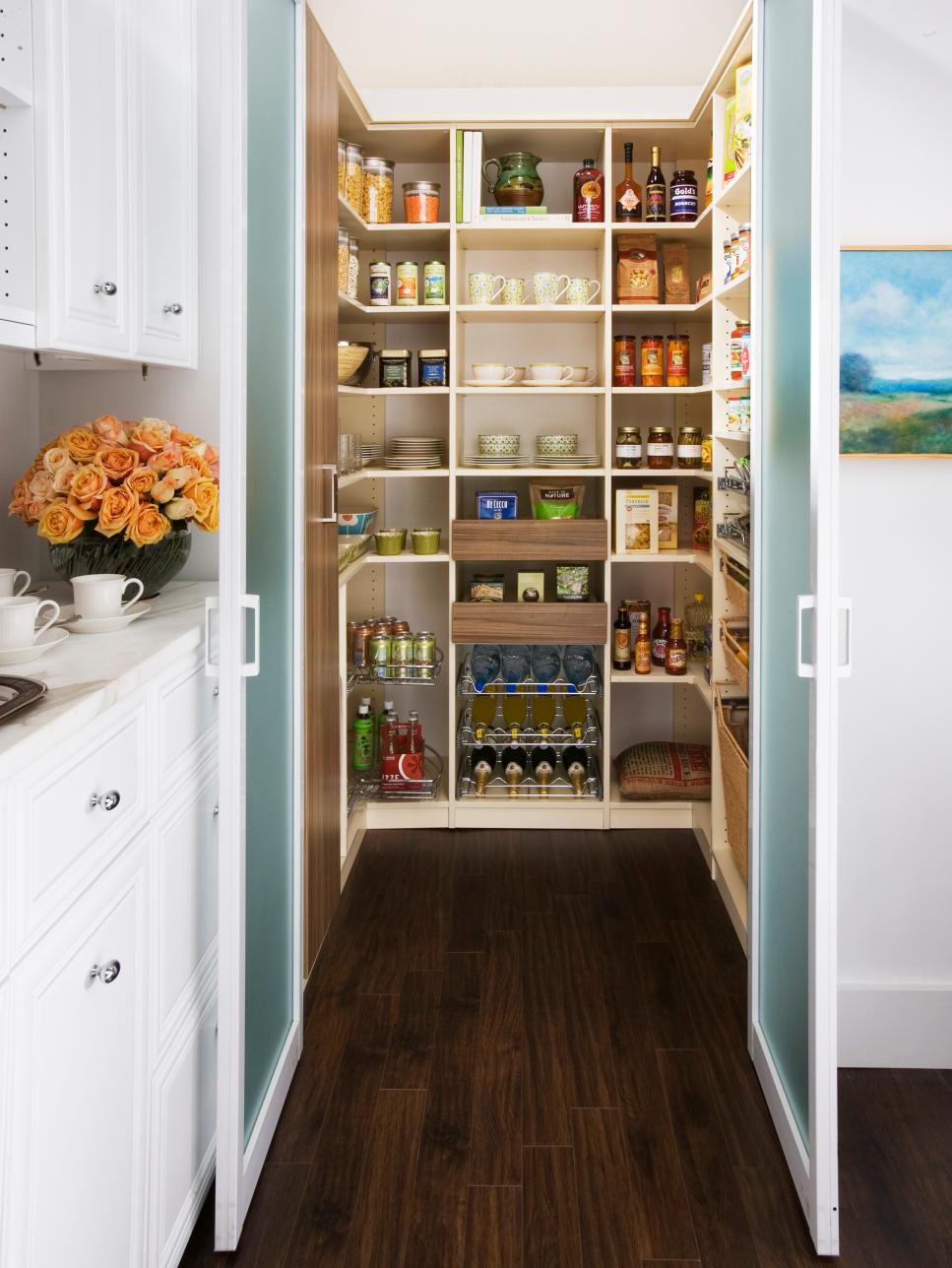
Oxygen Absorbers and Mylar Bags: Preserving Your Emergency Food
When it comes to safeguarding your emergency food supply for the long term, two essential tools stand out: oxygen absorbers and Mylar bags. These items play a pivotal role in preserving the quality and shelf life of your stored food, ensuring that it remains safe and nutritious when you need it most.
1. Oxygen Absorbers: The Silent Guardians of Food Preservation
What Are Oxygen Absorbers?
Oxygen absorbers are small, sealed packets that contain iron powder and other substances capable of absorbing oxygen from the surrounding environment. They are designed to create an oxygen-free atmosphere within food storage containers, preventing the growth of aerobic bacteria and the oxidation of your stored foods.
How Do Oxygen Absorbers Work?
The science behind oxygen absorbers is quite simple yet highly effective. When placed in a sealed container with your food, oxygen absorbers gradually activate and begin absorbing oxygen. As they do so, they release no harmful gases or chemicals; they merely reduce the oxygen concentration within the container to less than 0.01%.
Why Are Oxygen Absorbers Essential?
- Extending Shelf Life: By eliminating oxygen, these packets significantly extend the shelf life of your stored food. Oxygen is a primary contributor to food deterioration, causing the loss of flavor, texture, and nutritional value.
- Preventing Spoilage: Aerobic bacteria and fungi require oxygen to thrive. Oxygen absorbers inhibit their growth, reducing the risk of spoilage, mold, and other contaminants.
- Preserving Nutritional Value: Oxygen-free environments help maintain the nutritional content of your stored food, ensuring you have access to vital nutrients during emergencies.
2. Mylar Bags: The Guardians of Freshness
What Are Mylar Bags?
Mylar bags are specialized, thick, and flexible storage bags made from a polyester film known as BoPET (biaxially-oriented polyethylene terephthalate). They are designed to create a barrier against external elements like moisture, oxygen, light, and pests, preserving the freshness of your stored food.
How Do Mylar Bags Work?
Mylar bags serve as an impermeable shield against external threats. When you seal your food within a Mylar bag, you create a protective environment that safeguards your provisions from moisture, oxygen, and other contaminants. The added benefit is that Mylar bags are incredibly durable and resist punctures, tears, and heat.
Why Are Mylar Bags Essential?
- Maintaining Food Quality: Mylar bags effectively prevent the ingress of oxygen and moisture, preserving the quality and taste of your stored food over extended periods.
- Protecting Against Pests: The robust construction of Mylar bags acts as a barrier against pests like insects and rodents, ensuring your food remains untainted.
- Flexible Sizing: Mylar bags are available in various sizes, allowing you to tailor your storage solutions to your specific needs, whether you’re storing grains, legumes, or other essentials.
Combining Oxygen Absorbers and Mylar Bags
To maximize the effectiveness of storing food for emergencies, it’s common practice to use both oxygen absorbers and Mylar bags together. After placing your food items in a Mylar bag, insert an oxygen absorber before sealing the bag. This dual approach creates a nearly oxygen-free, airtight environment that significantly extends the shelf life of your emergency provisions.
In the next section, we’ll delve into practical tips for organizing and rotating your food stockpile to ensure nothing goes to waste.
8. Organizing and Rotating Your Food Stockpile
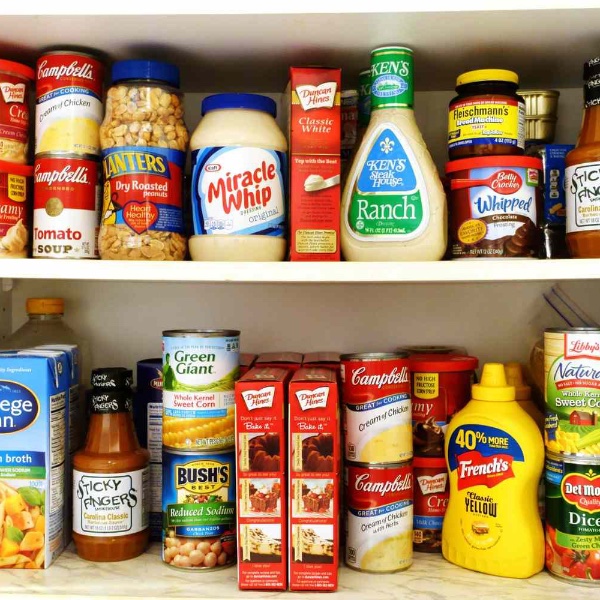
Efficient Management for Prolonged Preparedness
As a diligent prepper, you’ve invested time and resources into building a robust food stockpile to ensure your family’s well-being during emergencies. However, an often-overlooked aspect of prepping is the efficient organization and rotation of your stored provisions. Properly managing your food stockpile not only prevents wastage but also ensures that you have access to fresh and nutritious supplies when they’re needed most. In this section, we’ll provide valuable tips on organizing and rotating your food stockpile effectively.
1. FIFO: First In, First Out
The golden rule of food stockpile management is FIFO – First In, First Out. This principle ensures that the oldest items in your inventory are consumed first, preventing any items from reaching their expiration date unused.
- Label Your Supplies: Clearly label each item with its purchase or storage date. Use waterproof markers or labels to prevent smudging or fading.
- Storage Containers: Consider using transparent storage containers or bins for better visibility, making it easier to identify items that need to be consumed sooner.
- Shelving and Racks: Invest in sturdy shelving units or racks to keep your stockpile organized. Make sure to arrange items so that the oldest ones are at the front and easily accessible.
2. Inventory Tracking
Maintaining an inventory log is an invaluable practice for preppers. Here’s how to create one:
- Digital or Physical: You can keep an inventory log digitally on your computer or use a physical notebook. Some preppers even use both for redundancy.
- Categories: Categorize your items by type, such as canned goods, grains, or dried fruits. Include details like quantity, purchase date, and expiration date.
- Regular Updates: Update your inventory log each time you add or remove items. This practice helps you keep track of your stockpile’s status and identify when it’s time to rotate items.
3. Rotation Schedule
Set up a rotation schedule to ensure that your food stockpile remains fresh and viable. Here’s a basic guideline to help when storing food for emergencies:
- Monthly Check: Dedicate time each month to review your inventory. Identify items that are approaching their expiration date and plan to use them in your meals.
- Meal Planning: Incorporate stockpile items into your regular meal planning. This not only helps with rotation but also ensures you’re accustomed to cooking with your stored supplies.
4. Donate or Share
Consider sharing excess or soon-to-expire items with neighbors, friends, or local food banks. It’s a compassionate way to prevent waste and help those in need while reinforcing community bonds.
5. Pest Control
Regularly inspect your stockpile for signs of pests like insects or rodents. Store food in airtight containers or use Mylar bags to deter unwanted visitors.
6. Temperature and Humidity Control
Ensure your storage area maintains a stable temperature and humidity level. Extremes in temperature and humidity can degrade the quality and shelf life of your provisions.
By implementing these practical tips for food stockpile organization and rotation, you’ll not only minimize waste but also enhance the overall efficiency of your emergency preparedness. In the next section, we’ll explore the essential concept of planning your prepper food stockpile when storing food for emergencies.
9. Planning Your Emergency Food Stockpile
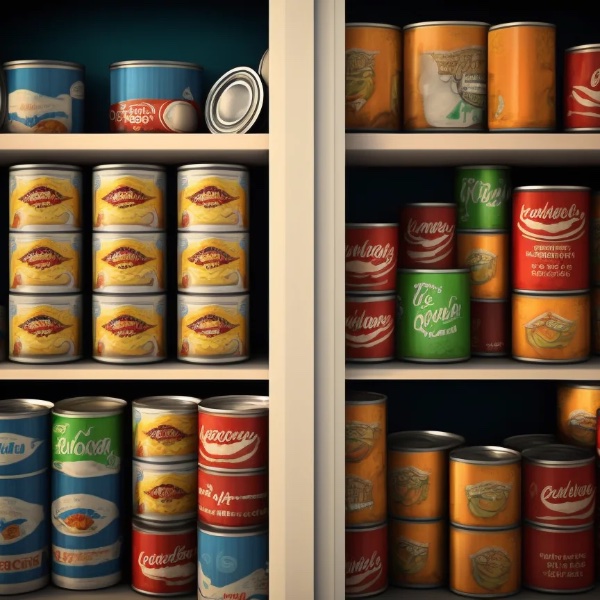
Strategic Planning for Sustained Preparedness
Building a robust food stockpile is a commendable step in your prepping journey. However, having a well-thought-out plan for your emergency food stockpile is equally crucial. This section delves into the importance of strategic planning and provides insights into how you can create an effective food stockpile plan to ensure your family’s sustenance during challenging times.
1. Define Your Objectives
Begin by clarifying your objectives for the food stockpile:
- Duration: Determine the duration you aim to be self-reliant in terms of food supply. Some preppers plan for a few weeks, while others prepare for several months or even years.
- Dietary Needs: Consider any specific dietary requirements or restrictions within your family, such as allergies or dietary preferences.
2. Calculate Your Caloric Needs
Estimate the daily caloric needs of each family member based on factors like age, sex, activity level, and body type. This calculation will serve as the foundation for determining the quantity of food required.
3. Food Categories
Categorize your food stockpile into various categories, ensuring a well-balanced and nutritious supply:
- Staples: Include items like rice, pasta, and flour, which form the basis of many meals.
- Proteins: Consider canned meats, beans, and legumes for protein sources.
- Fruits and Vegetables: Opt for canned or freeze-dried fruits and vegetables to maintain essential vitamins and minerals.
- Dairy: Include powdered or condensed milk, as well as dairy alternatives like almond or soy milk.
- Snacks and Comfort Foods: Don’t forget to add some comfort items to boost morale during stressful times.
4. Storage Space and Organization
Assess the available storage space in your home and ensure it’s adequate for your stockpile. Organize your food items systematically to optimize space and facilitate easy access.
5. Rotation Strategy
Incorporate a rotation strategy within your plan. As discussed earlier, prioritize the “first in, first out” (FIFO) approach to ensure items are consumed before reaching their expiration dates.
6. Emergency Cooking Methods
Consider the means by which you’ll prepare meals during emergencies. Options range from portable propane stoves to solar cookers or even open-fire cooking if safe and permitted.
7. Inventory Management
Maintain an inventory log to keep track of the quantity and status of items in your stockpile. Regularly update this log to reflect usage and additions.
8. Budgeting and Procurement
Create a budget specifically for your emergency food stockpile. Allocate funds systematically to gradually build your supplies without straining your finances.
9. Consider Special Needs
Account for any family members with special dietary needs or allergies. Ensure your stockpile includes suitable alternatives for them.
10. Emergency Food Kits
Explore the convenience of pre-assembled emergency food kits. These kits often contain a variety of dehydrated or freeze-dried meals that can be a valuable addition to your stockpile.
Having a comprehensive plan for your emergency food stockpile not only ensures you have enough to eat during challenging times but also provides peace of mind. In the next section, we’ll delve into additional tips and tricks to enhance your food storage strategy.
11. Building a 3-Day Supply for Immediate Emergencies
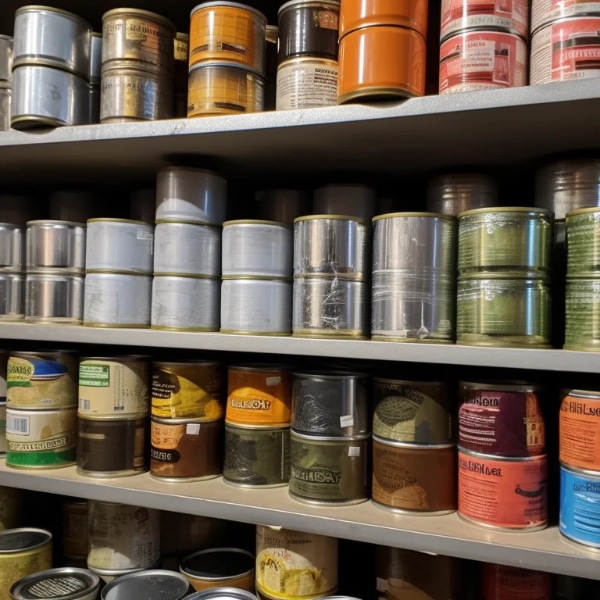
Securing Short-Term Survival
When disaster strikes, having a 3-day emergency food supply at the ready can make all the difference. In this section, we’ll explore why this short-term stockpile is crucial and how to go about building it effectively.
1. Immediate Needs
Emergencies, such as power outages, severe storms, or sudden evacuations, often require immediate action. During these critical moments, having a readily accessible 3-day emergency food supply can ensure that you and your family won’t go hungry. Here’s why it matters:
- Transitional Support: A 3-day supply bridges the gap between the onset of an emergency and the activation of more extensive food stockpiles. It offers transitional support while you assess the situation and plan for the longer term.
- Minimizing Panic: In the chaos of an emergency, panic can set in. Knowing you have sustenance for at least three days provides a sense of security and reduces stress.
- First Responders’ Arrival: Sometimes, it may take time for first responders or relief efforts to reach your location. Having a 3-day supply ensures you can sustain yourself until help arrives.
2. Essentials for a 3-Day Supply
Building a 3-day emergency food supply involves selecting items that are shelf-stable, require minimal preparation, and provide essential nutrients. Here’s what to consider:
- Ready-to-Eat Meals: Choose canned goods with pull-tab lids or pre-packaged meals that don’t require cooking.
- Nutrition Bars: High-energy nutrition bars are compact and convenient for on-the-go situations.
- Dried Fruits and Nuts: These provide a quick source of calories and nutrients.
- Bottled Water: Ensure you have enough water to stay hydrated for three days, typically one gallon per person per day.
- Instant Beverages: Consider powdered drink mixes or instant coffee/tea to boost morale and hydration.
- Utensils: Don’t forget disposable plates, utensils, and a manual can opener if necessary.
3. Rotation and Monitoring
A 3-day supply doesn’t mean set it and forget it. Regularly check the expiration dates of items and replace them as needed. Also, monitor your supply to ensure it remains intact and undisturbed.
4. Personalize for Special Needs
If you have family members with specific dietary restrictions or allergies, customize the 3-day supply to accommodate their needs.
By creating a 3-day emergency food supply tailored to your family’s requirements, you’re taking a significant step toward preparedness. But remember, this is just the beginning of your journey. In the next section, we’ll explore the importance of having a reliable cooking or baking method during emergencies.
12. Cooking Methods During Emergencies
Survival Cooking: When the Power’s Out
When you’re facing an emergency, having food is essential, but being able to cook or prepare it safely can be just as crucial. In this section, we’ll delve into why having reliable cooking or baking methods during emergencies is a key aspect of prepping.
1. The Need for Cooking Methods
Imagine you have a stockpile of canned goods, dried foods, and emergency supplies. These are essential for your survival, but what if you can’t access a functioning stove, microwave, or conventional oven? That’s where alternative cooking methods come into play:
- Power Outages: Natural disasters like hurricanes, tornadoes, or severe storms can knock out power for days or even weeks. In such situations, having a backup cooking method ensures you can prepare hot meals.
- Fuel Shortages: During emergencies, fuel sources may become scarce. Relying on alternative cooking methods can help conserve precious fuel.
- Long-Term Preparedness: If you’re prepping for an extended crisis, such as an economic collapse or a breakdown in supply chains, traditional cooking methods may become unsustainable. You need options that don’t rely on the grid.
2. Types of Emergency Cooking Methods
There are several practical and efficient alternatives to conventional cooking appliances:
- Propane or Camp Stoves: These portable stoves are versatile and use propane canisters, which are easy to store and provide consistent heat.
- Solar Ovens: Harness the power of the sun to cook food slowly but efficiently, making them perfect for sunny climates.
- Rocket Stoves: These highly efficient stoves burn small amounts of wood or biomass to produce intense heat for cooking.
- Fire Pit or Outdoor Grill: If you have outdoor space, a fire pit or grill can be invaluable for cooking during power outages.
- Dutch Ovens: These heavy-duty, cast-iron pots can be used on open flames, coals, or wood fires.
- Camping Cookware: Compact camping cookware sets are designed for outdoor use and are ideal for emergencies.
3. Safety and Preparation
Before relying on any emergency cooking method, it’s essential to understand how it works and practice using it. Here are some safety and preparation tips:
- Ventilation: Ensure you cook in a well-ventilated area to prevent the buildup of harmful gases.
- Fire Safety: Follow safety protocols when using open flames, and have fire extinguishing equipment on hand.
- Fuel Storage: Store fuel sources like propane or wood pellets safely and away from living spaces.
- Practice: Try out your emergency cooking methods before you actually need them. This way, you’ll be familiar with their operation.
4. Convenience in Chaos
Having alternative cooking methods available provides comfort, security, and a sense of normalcy during challenging times. Whether it’s a hot meal or a warm beverage, these methods offer the convenience you need when the power’s out, and the situation demands resilience.
In the next section, we’ll explore the convenience of pre-assembled emergency food kits, which can be a valuable addition to your prepping strategy.
13. Prepper Food Kits for Convenience
Ready-Made Emergency Meals: Your Backup Plan
When it comes to emergency preparedness, convenience can be a game-changer. In this section, we’ll explore the practicality and benefits of prepper food kits, ready-made solutions designed to keep you nourished during challenging times.
1. The Convenience Factor
During emergencies, time and resources can be scarce. This is where prepper food kits shine. These kits are carefully curated to provide essential nutrients and calories while requiring minimal preparation. Here’s why they’re worth considering:
- Quick and Easy: Prepper food kits typically contain dehydrated or freeze-dried meals that can be prepared with minimal effort. Just add water, and you’ll have a hot meal ready in minutes.
- Portability: These kits are often packaged in lightweight, compact containers, making them easy to transport if you need to evacuate.
- Long Shelf Life: Most prepper food kits have a long shelf life, sometimes up to 25 years, ensuring that your emergency food stays edible for extended periods.
2. What’s Inside a Prepper Food Kit?
While the exact contents may vary between brands and types of kits, here are some common components you can expect to find:
- Dehydrated or Freeze-Dried Meals: These are the core of the kit, providing a variety of dishes like pasta, rice, soups, and stews.
- Caloric Content: Kits are designed to provide a specific number of calories per day, ensuring you meet your nutritional needs during a crisis.
- Packaging: Meals are typically sealed in mylar bags or airtight pouches, protecting them from moisture and extending their shelf life.
- Variety: Some kits offer a diverse menu to prevent flavor fatigue during long-term emergencies.
3. When to Use Prepper Food Kits
Prepper food kits can be beneficial in various emergency scenarios:
- Short-Term Disruptions: They are perfect for short power outages, temporary evacuations, or disruptions in your normal food supply.
- Long-Term Preparedness: If you’re preparing for extended crises, these kits can serve as a valuable component of your food storage strategy.
- Bug-Out Bags: Compact and lightweight, some kits are ideal for inclusion in your bug-out bag, ensuring you have sustenance on the go.
4. Tips for Using Prepper Food Kits
To make the most of your emergency food kits, keep these tips in mind:
- Rotation: Even though these kits have a long shelf life, it’s essential to rotate them periodically to ensure freshness.
- Water: Ensure you have an adequate supply of clean water for rehydrating the meals.
- Special Dietary Needs: If you have specific dietary requirements, look for kits that cater to those needs.
5. Peace of Mind, One Meal at a Time
In times of crisis, having a prepper food kit on hand can provide peace of mind. Knowing that you have easily accessible, nutritious meals ready can make a significant difference in your overall emergency preparedness.
As we conclude this guide on storing food for emergencies, we’ll recap the key points discussed throughout the article, emphasizing the importance of planning and taking proactive steps in building your prepper food supply.
14. Additional Tips and Tricks
Pro Tips for Effective Food Storage
As you dive deeper into the world of prepping and storing food for emergencies, there are some pro tips and tricks that can elevate your preparedness to the next level. In this section, we’ll share valuable insights, techniques, and reader-contributed advice to help you make the most of your prepper food supply.
1. Rotation Is Key
One of the most critical aspects of storing food for emergencies is rotation. By consuming and replacing stored food before it reaches its expiration date, you ensure that your supply remains fresh and safe to eat. Here’s how to do it effectively:
- First In, First Out (FIFO): Organize your food stockpile so that older items are placed in front, and newer items go in the back. When you restock, use the older products first.
- Regular Check-Ins: Set a schedule to inspect your food storage regularly. This can be done monthly or quarterly, depending on the size of your stockpile.
- Meal Planning: Plan your meals based on the items in your storage. This not only helps with rotation but also ensures you use what you have efficiently.
2. Label Everything
Labeling your food storage containers is a simple yet incredibly effective way to stay organized. When storing food for emergencies use waterproof, smudge-resistant labels, and include essential information such as:
- Expiration Date: Clearly mark the date when the product should be consumed or rotated.
- Contents: Specify what’s inside the container, including the type of food and any relevant details like flavor or brand.
- Storage Instructions: If there are specific storage conditions, such as keeping an item in a cool, dry place, make sure to note them.
3. Vacuum Sealers Save the Day
Investing in a vacuum sealer can be a game-changer for food storage. These devices remove air from containers or bags, significantly extending the shelf life of your food. Use vacuum sealers for items like grains, beans, and dried fruits.
4. Bulk Buying
Consider purchasing non-perishable items in bulk. This not only saves you money but also reduces the frequency of shopping trips. Just ensure you have adequate storage space and that you follow proper rotation.
5. Tailor Your Food Storage to Your Diet
If you or your family members have specific dietary needs or allergies, tailor your food storage accordingly. Look for emergency food options that accommodate those requirements. It’s essential that everyone can safely consume the stored food during an emergency.
6. Learn to Preserve Food
Beyond pre-packaged emergency foods, consider learning food preservation techniques like canning, dehydrating, and fermenting. These skills allow you to store fresh produce from your garden or local sources.
7. Keep a Comprehensive Inventory
Maintaining an inventory of your food storage is an often-overlooked but crucial step. It helps you keep track of what you have, ensures proper rotation, and prevents over-purchasing items you already possess.
8. Share and Learn from the Prepping Community
Connect with fellow preppers and share your experiences and knowledge. Online forums, social media groups, and local prepper meet-ups can be invaluable resources for learning new tips and tricks from those who have been there and done that.
9. Stay Informed
Stay updated on the latest developments in emergency food storage and prepping in general. New products and techniques are continually emerging, and staying informed can help you refine your strategy.
10. Stay Flexible
While it’s crucial to have a well-organized and thought-out food storage plan, flexibility is equally important. Be ready to adapt to changing circumstances, whether it’s a new dietary need in your family or a shift in your location or living situation.
With these pro tips and reader-contributed advice, you’re better equipped to navigate the world of prepper food storage with confidence and efficiency.
As we conclude this comprehensive guide, we’ll recap the key takeaways and offer some final thoughts on the importance of being prepared for whatever challenges may come your way.
Conclusion
Recap, Prepare, and Take Action: Your Food Storage Journey Begins Now
In this comprehensive guide to storing food for emergencies, we’ve delved deep into the world of food storage for emergencies. We started by highlighting the importance of having a well-prepared food supply as a fundamental aspect of emergency preparedness. From understanding the relevance of food storage to exploring various types of emergency foods, we’ve equipped you with essential knowledge.
We emphasized the significance of shelf-stability and longevity in your food choices and discussed the importance of proper storage methods, including the role of oxygen absorbers and mylar bags. You’ve learned valuable tips on organizing and rotating your food stockpile and the importance of having a well-thought-out plan for your emergency food supply.
Our journey also explored the importance of having a 3-day supply for immediate emergencies and the need to be prepared for cooking methods during unexpected situations. We introduced you to the convenience of prepper food kits, making your preparedness journey more accessible.
In this concluding chapter to storing food for emergencies, we want to stress the key takeaways once more. Preparedness isn’t a destination; it’s an ongoing process. Planning, preparation, and regular food rotation are your allies in ensuring you and your loved ones remain well-fed and secure during challenging times.
Your Key Takeaways:
- Be Proactive: Start building your prepper food supply today. The sooner you begin, the better prepared you’ll be for whatever comes your way.
- Stay Informed: Keep up with the latest developments in food storage and emergency preparedness. Knowledge is power in your preparedness journey.
- Stay Flexible: Adaptability is a valuable trait in prepping. Be ready to modify your food storage plan as circumstances change.
- Connect with the Prepping Community: Join online forums, social media groups, or local meet-ups to learn from experienced preppers and share your own insights.
- Rotation Is Key: Regularly check your food stockpile, use older items first, and maintain a well-organized inventory.
- Take Action: As we conclude this guide on storing food for emergencies, we want to encourage you to take action now. Building your prepper food supply is a vital step towards a safer and more secure future.
Your food storage journey begins today. With the knowledge and insights gained from this guide, you’re better equipped than ever to face whatever challenges may come your way. Remember, preparedness is not just a concept; it’s a way of life. Stay informed, stay prepared, and most importantly, stay safe.
Take a look at more emergency food and water things here.
